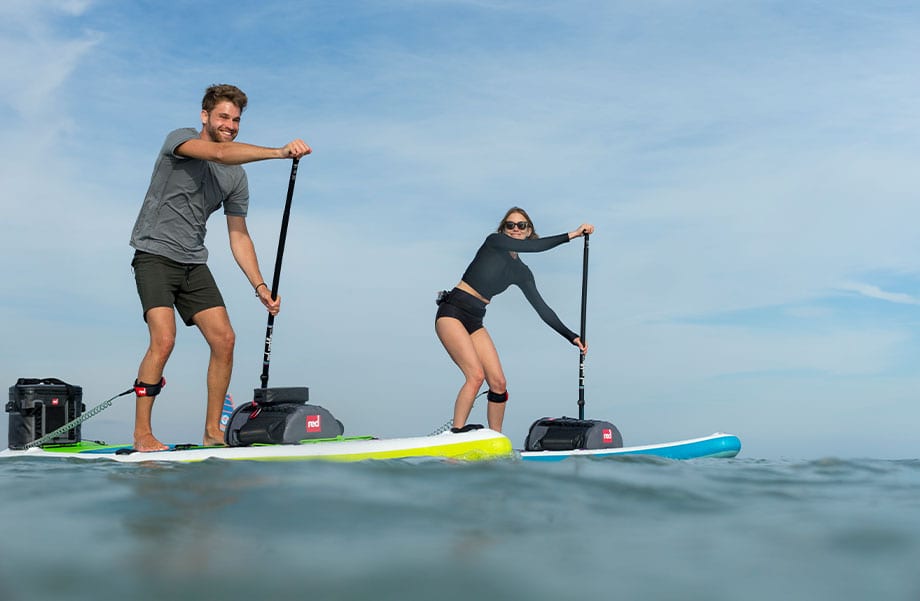
Stand up paddle boarding’s popularity has soared across the rivers, lakes, canals andjust about any water body out there. As many people find this water sportthrilling, it goes without saying that safety is often overlooked. It isimportant that you don’t get too excited for it and consider safetyprecautions before heading out. Before starting, we shall look at weather conditions,safety gear, along with other safety measures to take during paddle boarding.
Tip 1: MONITORING WEATHER CONDITIONS
Stand up paddle boarding is a skillful sport that requires awareness especially indangers that may occur due to changes in weather patterns.
Sunrise/sunset
If you are paddle boarding in a new or foreign place, knowing the times of sunset and sunrise is important so thatyou never paddle when it is dark. Scheduling your paddling sessions knowing thesunrise and sunset times will also ensure you never start paddling before thelight comes out.
Wind
Wind is probably the most important weather force to be aware of before heading out to the water. Higher wind speeds may render paddling difficult for beginnerssince the waters will get chopped up. During windy days, you may find yourselfbattling to stay afloat rather than enjoying a smooth paddle boarding experience. Therefore,checking the wind speed is very important. In general, if the winds go beyond10 knots, paddle boarding may not be safe. Otherwise, anything below 10 knots isconsidered as safe for stand up paddleboarding. Wind direction is also essential. You can go against the wind while starting your paddlingsession so that on your way back it takes less time to reach the shores.
Tides
A good understanding of the tides is every paddler’s essential skill while paddle boarding in the ocean. A small change in tide can move your floatable device miles away. Make sureyou plan ahead of time to understand the tide movements. Working around thetides will help you avoid paddling exhaustion and save you time to make itsafely back to the shore.
Tip 2: SAFETY GEAR
SUP PFD
As you head over to deeper limits of swimming, consider carrying enough PFDs (PersonalFloatation Devices) for extra safety. In fact, once a paddleboard passes whatis considered as narrow limits of swimming, the law states that each passengerwears an approved floatation device. Make sure you choose a floatation devicethat offers maximum buoyancy. But don’t wait until you reach these limits- havinga PFD guarantees safety at all times.
SUP Leash
One of the most important tools in a SUP board is a leash. A leash iswhat draws the line between safety and danger; especially in floatationdevices. Any time you paddleboard without a leash you risk letting your board float away when you fall. This safety deviceattaches you to your SUP board and ensures that you’re always around your board, nomatter what conditions you are in. Depending on the waters, you may need to choose the right type of leash.A coiled leash is best used in flat waters as it does not drag the board andslow you down. Straight leashes will do well in the oceans and are strongenough to withstand the turbulent white water. In rivers or areas where theremay be rocks or branches underneath, a quick release leash will prevent youfrom getting dragged along if you get entangled.
Tip 3: IMPORTANT PADDLING SKILLS
Flip Rescue
Not at all times will you be alone while paddling (paddle boarding aloneis dangerous too). However, when you have a partner, learn how to perform asimple flip rescue. Practice in still waters then when you are confidentenough, you can try to figure out how to do a flip rescue in moving waters. Know the whole processand keep practicing until it becomes your second nature.
Kneeling and Prone Paddling
Apart from paddling while standing up, it is important to learn how to paddle while lying prone or on your knees. This way you can paddle on yourknees in case your sup board breaks up. And, depending on where your board breaks, youmay have to paddle with your arms while lying on your paddle. Knee paddling isalso important if the weather is too strong or the currents are blowing againstyour direction. Practicing both skills should allow you to pass through murky andundesirable conditions.
Tip 4: ADDITIONAL SAFETY TIPS
Find a partner
As mentioned earlier, paddling alone is not safe and we recommend that you find apaddle buddy. You never know what kind of mishap you would face whilesurfing in the water. Something as your leash snapping up could be dangerous. Makesure you have someone to help or help you during such moments.
Sunscreen
Yes, we are paddleboarding in the summer and the last thing you’d wanton your way home is a scary face. Your skin needs extra care and protectionfrom harmful UV rays. Apart from applying sunscreen, you can also wear a hator a rash guard to protect your skin.
Take note of these safety paddleboarding tips and you should be one step away to a healthy surfing experience. Just be sure to remain calm the next time the unexpected happens.
